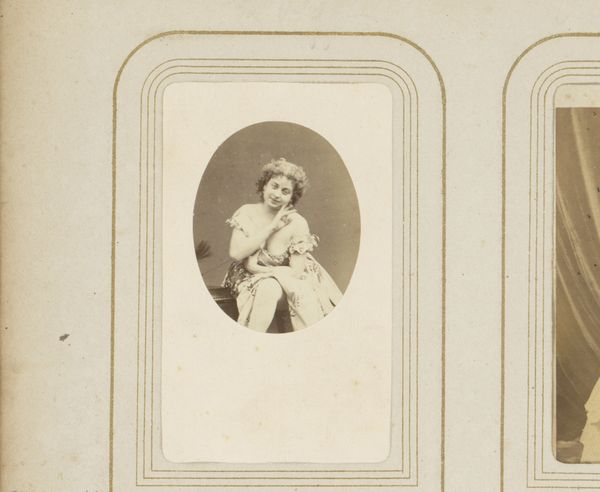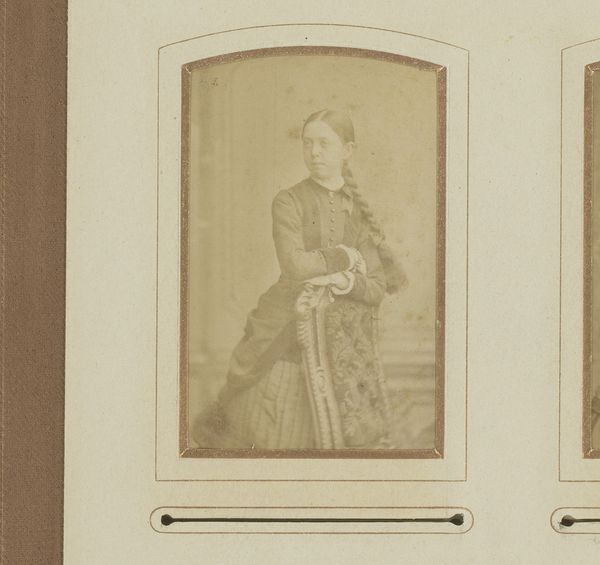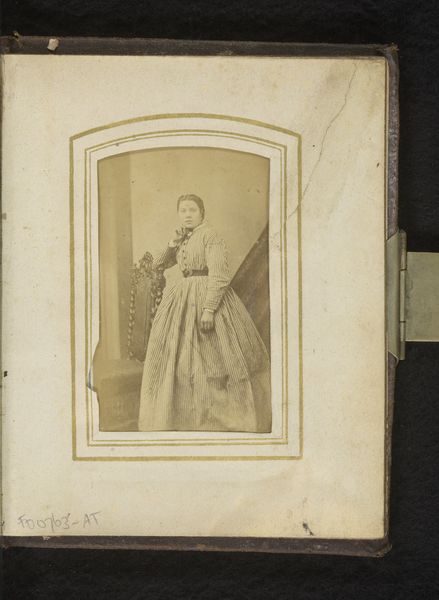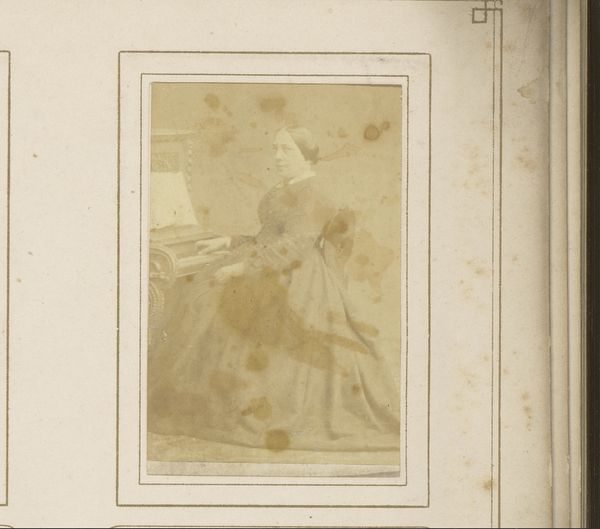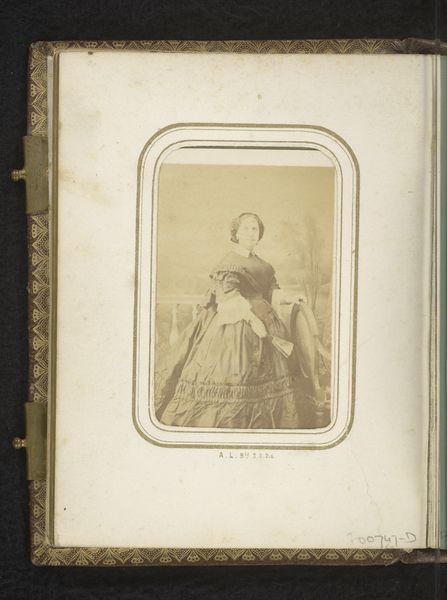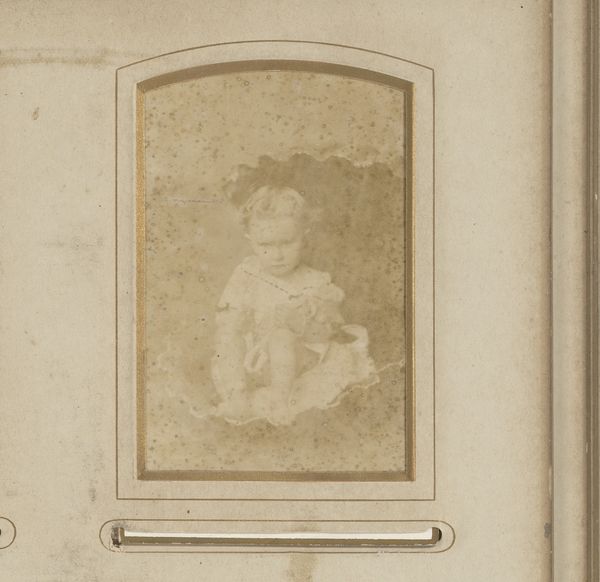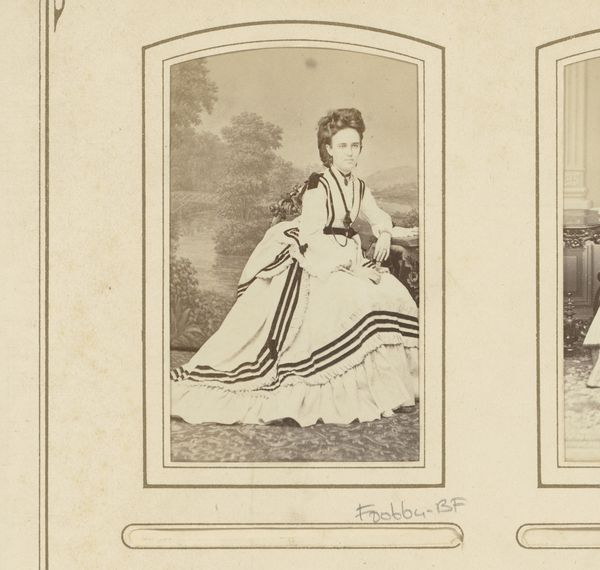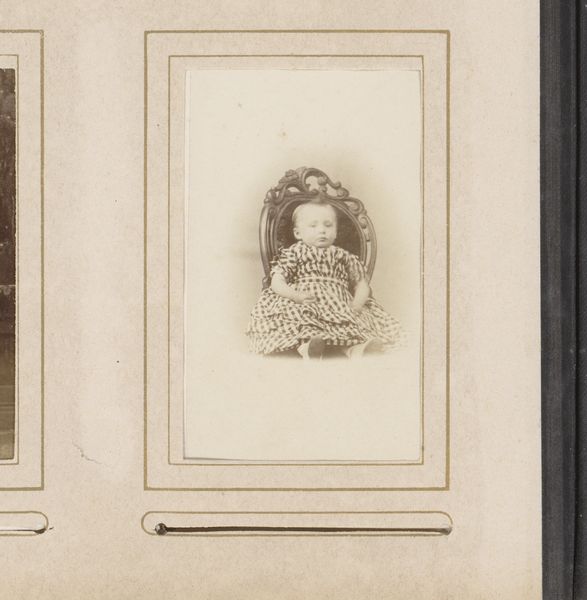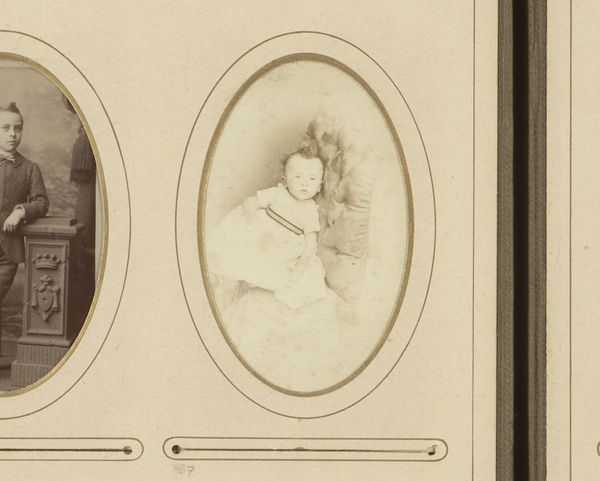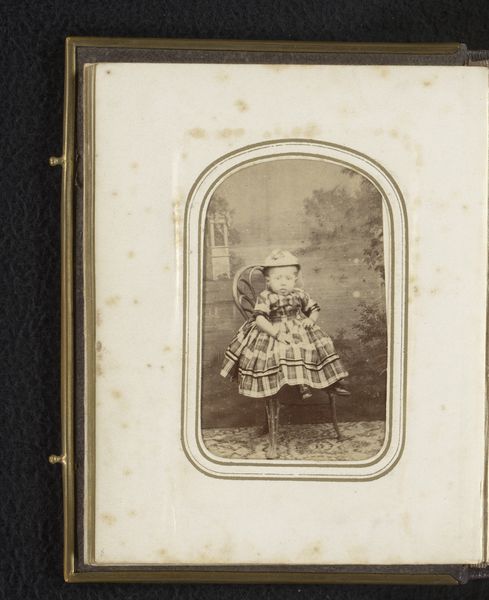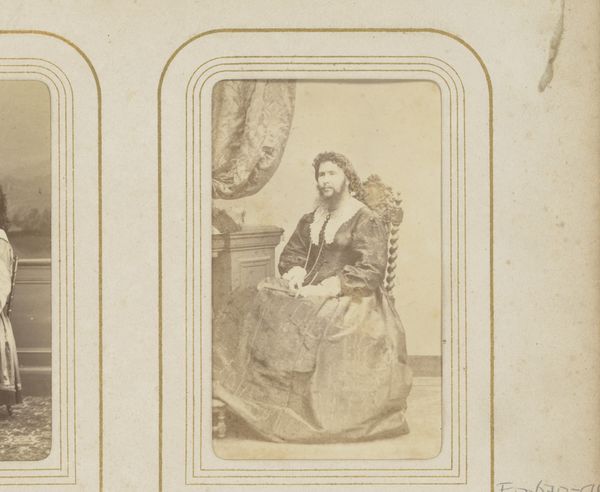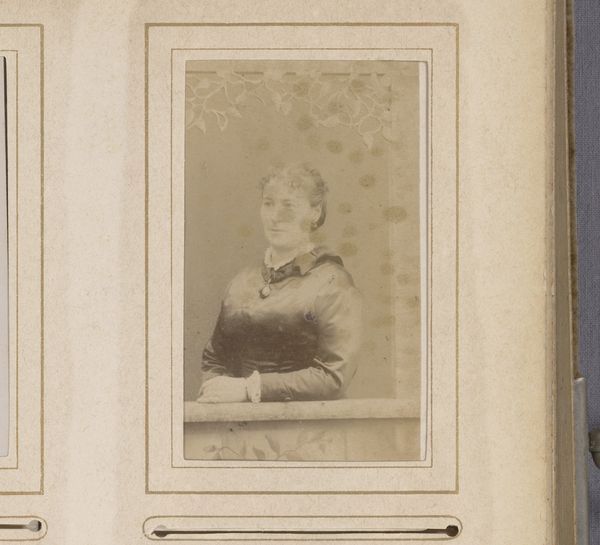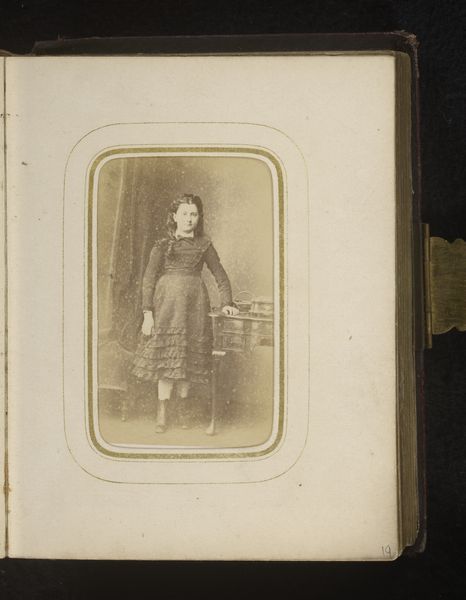
photography
#
portrait
#
charcoal drawing
#
photography
#
child
#
charcoal
Dimensions: height 85 mm, width 53 mm
Copyright: Rijks Museum: Open Domain
Editor: This is a photograph titled "Portret van een kind" by August Döpke, dating between 1860 and 1900. It's a monochromatic portrait of a child, seemingly set within a larger photo album. I find the hazy quality of the image quite intriguing, almost dreamlike. What formal qualities stand out to you in this photograph? Curator: The composition immediately strikes me. Note how the photographer employs a shallow depth of field, throwing the background into a soft blur. The framing itself, the architectural lines of the window-like space surrounding the child, functions as a sort of internal border, focusing our gaze. Consider, also, the tonal range; it's subtle, largely confined to grayscale, and contributes significantly to the subdued mood. How does that limited palette function? Editor: I guess it reinforces that feeling of distance, like we're looking at something very old, a world away. Do you think the blurring serves a purpose, beyond just being a result of the photographic process? Curator: Precisely! The controlled blurring directs our focus, isolating the subject's face. It begs us to examine it closely despite the technological limitations, almost challenging our interpretation of 'realism'. The use of photography to almost intentionally obscure certain elements...it introduces a tension between representation and abstraction. How does this tension alter our understanding of the subject matter, that is, of the child? Editor: It's interesting, it's both a very specific child, and also this sort of generalized figure, representative of childhood itself, in a way. Curator: Exactly. Through a careful consideration of its formal elements - its composition, tonal range, and use of focus – the photographer creates a portrait that transcends a simple likeness, delving into something more evocative. A simple photographic study offers fertile ground for analysis when viewing for purely the intrinsic elements, rather than relying on external reference. Editor: I see, focusing on how the techniques used in capturing this portrait impacts the narrative of youth. Curator: Yes, analyzing the materiality opens a dialogue, rather than depending on anecdotal assumptions based on the child's representation.
Comments
No comments
Be the first to comment and join the conversation on the ultimate creative platform.

